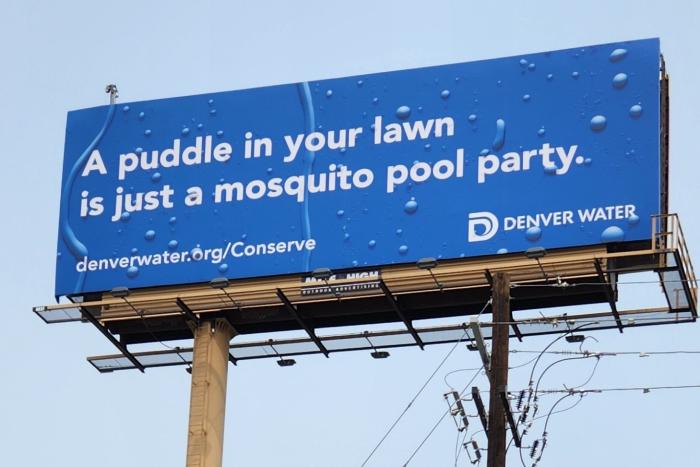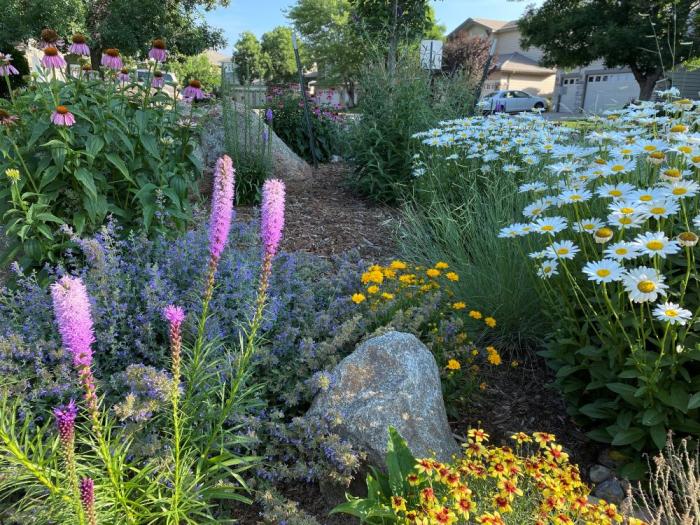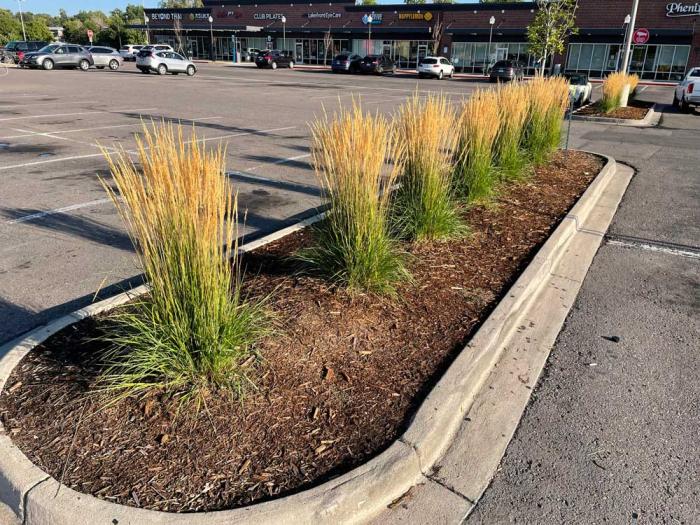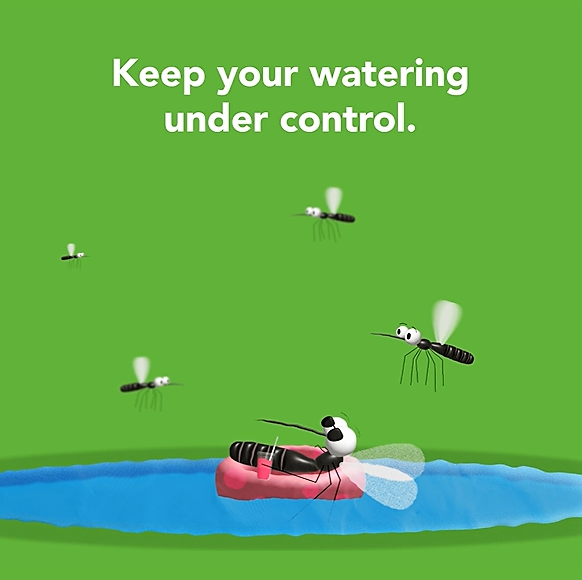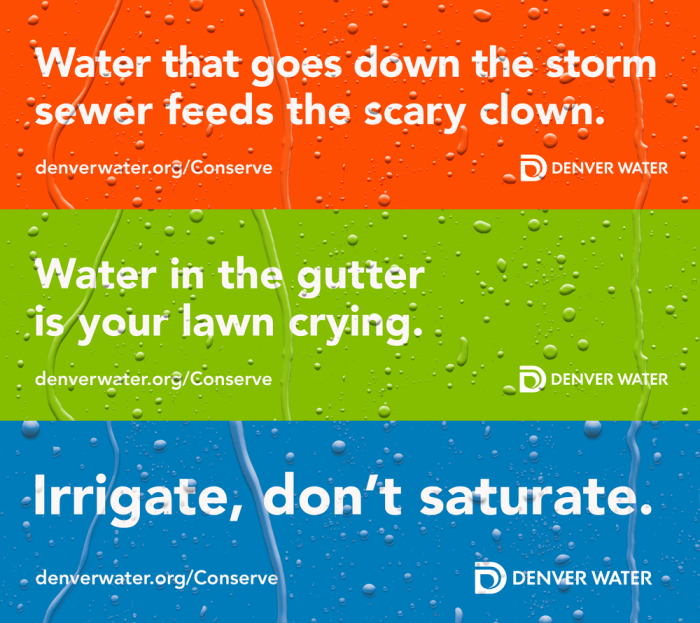'A puddle in your lawn is just a mosquito party.'
With headlines about climate change and the mega-drought that has plagued the Colorado River for more than two decades, it’s natural to worry about Denver’s future water supply.
Denver Water’s leaders and planners share their customers’ concerns about the health of the West’s major river that supports 40 million people — and accounts for half of the utility’s water supply.
“Being smart about our water use respects the beauty of our great state and ensures a safe water supply for generations to come. It’s simply the right thing to do. It’s a Colorado thing,” said Greg Fisher, Denver Water’s manager of demand planning.
The utility has taken a series of steps over the years to ensure it has a reliable water supply for its customers today and in the future. And it is partnering with customers, public agencies and sister utilities across the Denver area, the state and the West to prepare our communities for a warming climate that will affect us all.
“Denver Water and our customers have made a lot of progress in reducing water use, especially through the 10-year conservation campaign ‘Use Only What You Need’ that started after the 2002-04 drought. During that campaign our customers reduced their water use by 22% compared to before the drought, but we can’t rest on our laurels,” Fisher said.
Leveling up
What comes next will require a communitywide effort to prepare our yards, parks, neighborhoods and public spaces for a warming climate.
About 40% of the water Denver Water provides to customers is used for outdoor landscapes. And our existing landscapes could need even more water as Denver gets warmer.
Sign up for TAP’s free, weekly email newsletter to get tips for saving water indoors and out. (Scroll down to put your email in the light blue bar.)
Average temperatures in Denver have risen by about 2.2 degrees Fahrenheit over the past 40 years. In Colorado, six of the state’s eight warmest years on record have occurred since 2012.
Thirsty Kentucky bluegrass, a common type of grass used as groundcover across Denver, can require an extra 24-26 inches of water to look good.
It just doesn’t fit into our semi-arid climate.
A journey begins
Recognizing the need to address the effects of the changing climate, in August 2022, Denver Water joined with water providers across the Colorado River Basin in a commitment to substantially expand efforts to conserve water, reduce demands and expand reuse and recycling of water supplies.
The utilities, including Denver Water, have committed to reducing “nonfunctional,” or decorative, thirsty turf by 30% across their service areas.
An agreement signed by water utilities across Colorado and the Southwest aims to reduce water use.
In Denver, the transformation is starting with bigger areas, such as those grassy areas often found around municipal buildings and public spaces. Medians along roads and highways also are prime areas for planting more water-wise and drought-tolerant landscapes.
Denver Water is beginning to transform its own properties around the city and will be working with customers — large and small — as they transform their own properties. To meet the 30% target, about 75 million square feet of decorative grass will need to be transformed across Denver Water’s service area in the city and surrounding suburbs.
“Just as Denver was created from the prairie, we have to create a naturally Colorado landscape — a ColoradoScape — that will meet our needs in this new, warmer climate,” Fisher said.
“It will take time to create a diverse, water-smart landscape that includes trees that offer cooling shade in the summer heat, drought-tolerant plants and grasses that offer year-round beauty to our neighborhoods, and diverse habitat for the wildlife, birds and pollinators that live among us.”
What is a ColoradoScape?
A Colorado landscape is not about flat, expansive swaths of thirsty Kentucky bluegrass. But it’s not fields of gravel dotted with cactus and desert plants either.
A ColoradoScape is an inspired landscape that’s vibrant through all of Colorado’s seasons, with a natural palette of color, texture and dimension that always offers something interesting and pleasing to the eye.
It takes design cues from Colorado ecosystems — with contours and elevation changes punctuated by boulders; drought and climate resilient plants that help maintain vibrant urban landscapes; and tree canopies that benefit our communities, wildlife and the environment.
One big advantage is that the people who live in the Denver metro area and across the state already know how important water is in supporting the Colorado way of life.
Denver Water is tapping into this collective sensibility by drawing attention to the importance of the summer watering rules in creative and clever ways.
A new water conservation campaign, which launched in late May, will use digital advertising, billboards, buses, radio, Connected TV and social media in English and Spanish.
While that campaign plays out, Denver Water also is working with partners to develop and expand water conservation programs that will help guide customers on landscape transformation.
“We know where we need to go and that it will take time to get there. This is a long-term effort that will require many years of work. And we know that Denver Water alone, or its customers alone, can’t succeed by themselves,” Fisher said.
“But by working together to transform our landscapes — big and small — all of us will play a role in creating an environment that’s a more natural fit and more climate appropriate for Colorado, creating the ColoradoScape.”
What is ColoradoScaping? Visit denverwater.org/Conserve to learn more.


